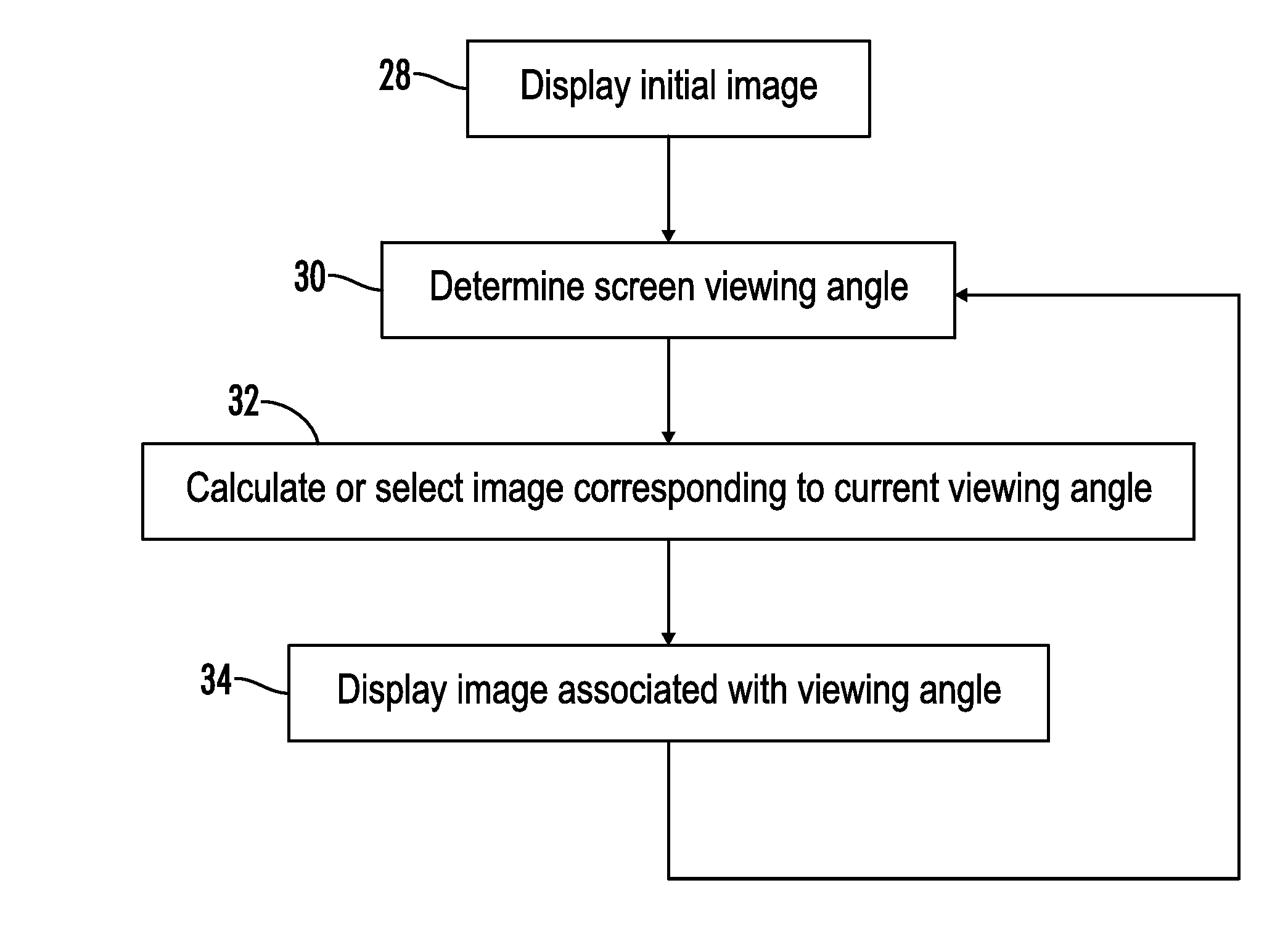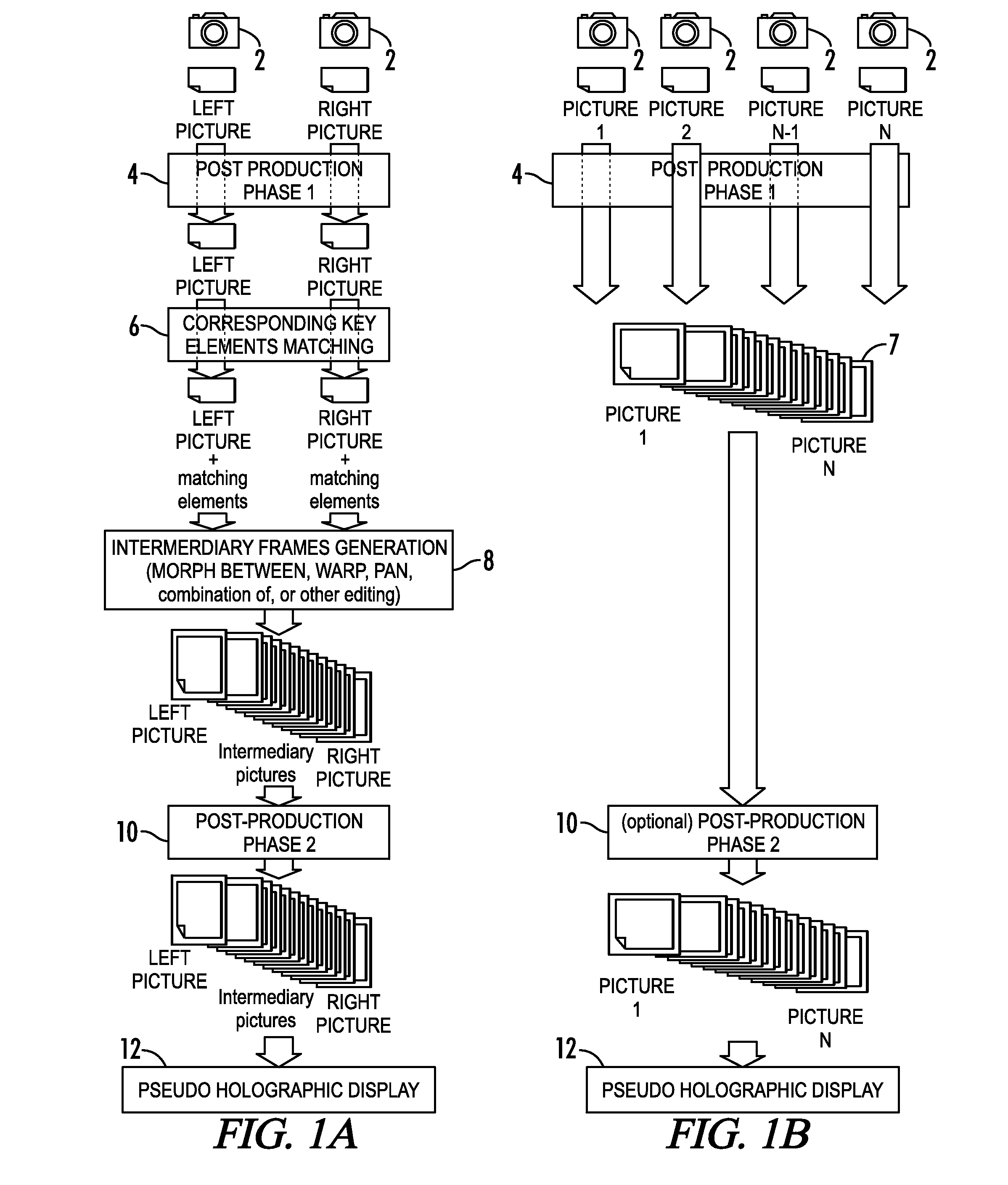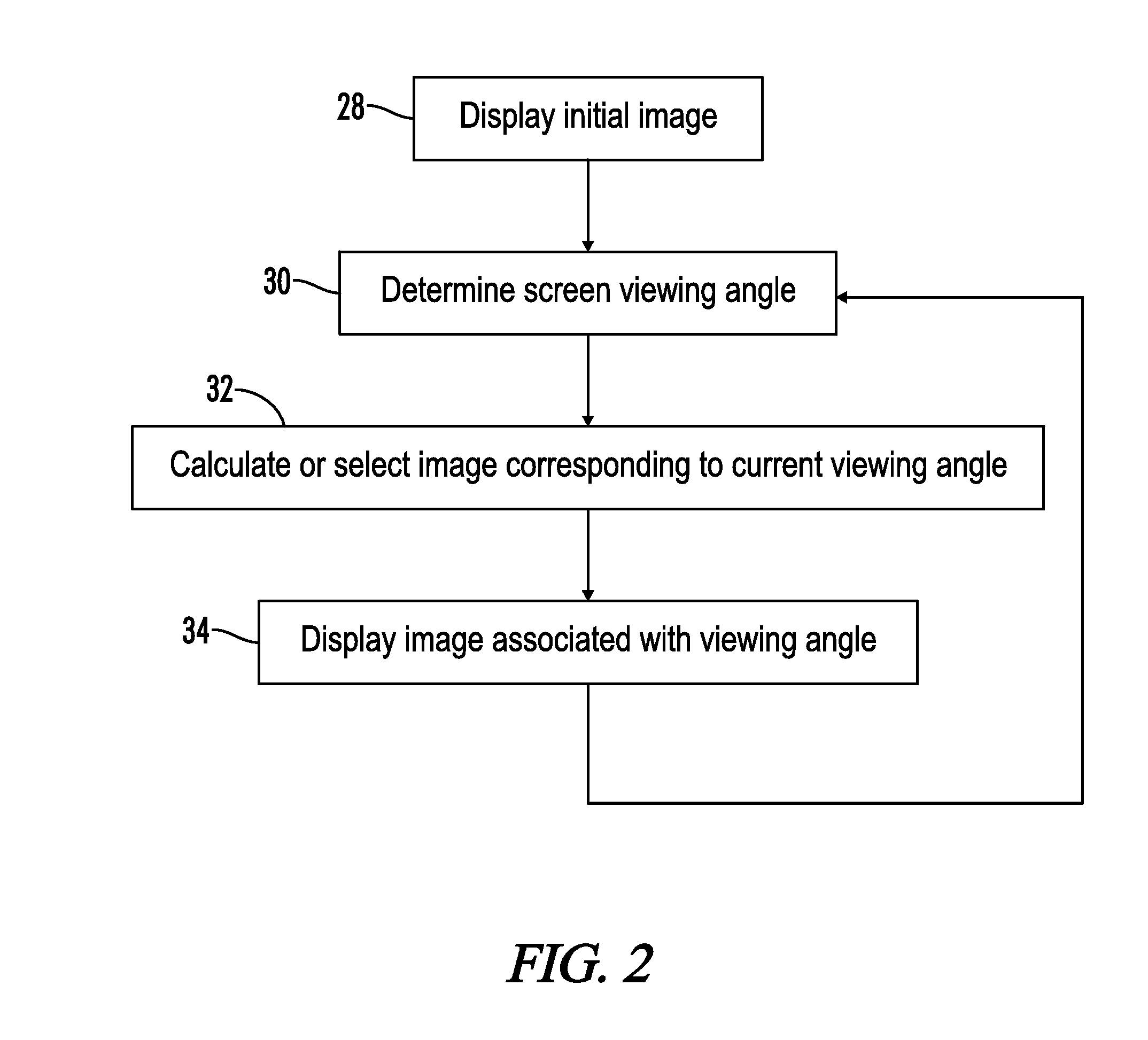System and method for creating pseudo holographic displays on viewer position aware devices
a technology of viewer position awareness and display system, applied in the field of system and method, can solve problems such as misalignment, distortion and tilting
- Summary
- Abstract
- Description
- Claims
- Application Information
AI Technical Summary
Benefits of technology
Problems solved by technology
Method used
Image
Examples
Embodiment Construction
[0034]The present invention uses a set of actual, or a set of actual and extrapolated images, to produce a pseudo holographic display. Referring now to FIG. 1(a), a flowchart of a preferred method of producing such a set of images for use in pseudo holographic display from stereoscopic images formed from cameras positioned at different viewing angles is shown. The method begins in step 2 with the capturing of a left side and right side image of an object from a pair of cameras. Alternatively, one camera can be used to capture images for both the left and right viewpoints. Once the images are captured, the method proceeds to the first post production phase in step 4. In the first post production phase 4, the acquired stereoscopic images undergo specific alterations to produce the desired final images. The processing procedures in the first post production phase are preferably standard photography post-production procedures such as smoothing the skin of a person, adjusting colors and ...
PUM
 Login to View More
Login to View More Abstract
Description
Claims
Application Information
 Login to View More
Login to View More - R&D
- Intellectual Property
- Life Sciences
- Materials
- Tech Scout
- Unparalleled Data Quality
- Higher Quality Content
- 60% Fewer Hallucinations
Browse by: Latest US Patents, China's latest patents, Technical Efficacy Thesaurus, Application Domain, Technology Topic, Popular Technical Reports.
© 2025 PatSnap. All rights reserved.Legal|Privacy policy|Modern Slavery Act Transparency Statement|Sitemap|About US| Contact US: help@patsnap.com



